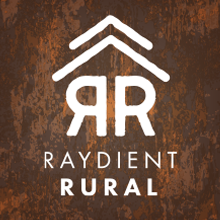A Hunter’s Guide to Wildlife Diseases

Photos courtesy of Outdoor Alabama. Photo by Christopher Jessee
Just like farm animals and pets, wild animals can carry diseases. But that shouldn’t stop you from harvesting your own meat. Here’s what you need to know to stay healthy and avoid wildlife diseases.
A few years ago, my husband harvested a rabbit that I was excited to help him process and cook, as I’d never tasted wild rabbit before.
My enthusiasm was quickly dampened, though, when we started to gut and skin it and noticed acorn-sized lumps on its body.
On closer inspection, the lumps were moving—wriggling under the fur, even as the animal’s body cooled. I felt my own skin crawling as I dropped the rabbit onto the skinning table, alarmed.
I remembered a seasoned hunter telling me he didn’t hunt until after the first hard frost of the year to avoid what he called warbles, and I wondered if that’s what I was seeing.
A quick Google search confirmed that these lumps were bot-fly larvae (commonly called warbles), and the animal was safe to eat. We just had to cut the larvae away from the meat, and it would be fine. We did, and it was.
Many wild animals are hosts to parasites like these that aren’t harmful to humans. But there are also zoonotic diseases that hunters should know about—diseases caused by pathogens that can jump between humans and other animals.
Here are some of those wildlife diseases and the best practices you can follow to keep you and your loved ones safe when you process and cook wild game.

Wildlife Disease Risks in Common Game Species
Wild rabbits are host to more than just bot-fly larvae…
Tularemia
Also known as rabbit fever, is transmissible to humans and causes a flu-like illness that can, in rare cases, become serious.
Humans can contract the bacterial infection by direct contact with an animal’s blood or other tissues (as when processing an animal) or by eating infected meat.
Tularemia is rarely reported in humans, but because it can progress to severe illness, wildlife health specialists encourage hunters to take precautions when processing animals (see below) and to tell their doctor about any concerning symptoms ASAP, as they may need antibiotics.
Brucellosis
Another wildlife disease affects many mammals, including feral pigs and white-tailed deer. This is another disease that causes flu-like symptoms in humans and may require long-term antibiotics to treat.
Brucella bacteria are shed through reproductive fluids, which hunters may encounter when processing animals. It’s also possible to become infected by inhaling aerosolized fluids from sick animals.
Trichinellosis
Trichinosis, commonly known as Trichinosis, is caused by the Trichinella roundworm and is found in many species of birds and mammals. Most notably for hunters in the Southeast, this parasite can be found in black bears and feral pigs.
The roundworms live in the muscles of infected animals, and humans can become infected when they eat undercooked meat.
Trichinosis can cause severe disease and even death in humans. Symptoms to look for: pain, fever, muscle aches, thirst, chills, weakness and fatigue.
Avian Influenza
It is not an immediate risk to North American hunters—the highly publicized H5N1 that’s transmissible to humans hasn’t been detected on the continent yet.
But experts suggest that waterfowl, especially ducks, should be handled with caution by hunters (see tips, below).
Chronic Wasting Disease
This is in the same class of diseases as what’s commonly called mad cow disease (bovine spongiform encephalopathy) and affects cervids like white-tailed deer. CWD is a neurologic disease that causes weakness and abnormal behavior in deer and is always fatal.
The research on human health is ongoing—while current evidence says this disease can’t be spread to humans, hunters should avoid eating meat from infected animals.
The proteins that cause the disease are found in brain and spinal cord tissue as well as saliva, urine and manure. You should avoid cutting into bones and direct contact with these fluids as much as possible when processing deer. Only consume boned-out meat.

Photo courtesy of Outdoor Alabama. Photo Credit: Terry Brandebour
Best Practices for Safely Handling Wild Animals
In many cases, you can’t tell if an animal is sick by observation alone.
Trichinosis, for example, can be fatal in humans, but it causes only minor behavioral changes in wildlife, such as increased predation and decreased reproductive activity.
That being said, don’t shoot an animal that acts abnormally, appears ill or is unusually thin.
Because it’s difficult to detect illness by observation, hunters should keep up with their state’s wildlife agency to be aware of disease outbreaks.
Hunters should also follow best practices for preventing illness when processing and cooking wild game.
Tips To Protect Yourself From Wildlife Diseases
- Don’t hunt if you’ve been sick: if your immune system is compromised, you may be more susceptible to serious illness
- Make clean, ethical shots, avoiding the abdomen to minimize contact with intestinal contents
- Do not eat, drink, smoke or chew tobacco while cleaning wild game
- Wear gloves when field-dressing an animal: look for disposable or rubber gloves that reach your elbows
- Cut around and discard any wounds in the animal’s flesh
- Wash hands, tools, equipment and work surfaces with soap and water. Consider disinfecting with bleach.
- Always cook wild meat thoroughly, to 150-180 degrees Fahrenheit, depending on the species. Wild birds should always be cooked to at least 165 degrees
- Many of these diseases manifest with flu-like symptoms: Contact your doctor and tell them about the animals you’ve interacted with if you feel ill after processing wild game
Keep Learning
Hunting for your own wild meat can be a rewarding process. As with many things worth doing, it’s not a zero-risk activity—but that’s what makes it so empowering.
Study the animals you’re hunting, including their biology and any pathogens they may carry and follow common-sense tips for cleaning and cooking wild game.
That’s really all there is to it!











Your email address will not be published. Required fields are marked*